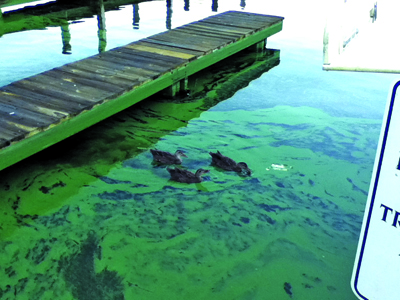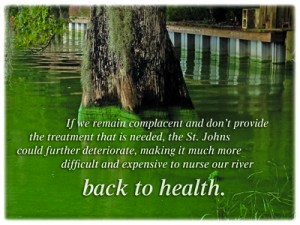Clean bill of health within reach for St. Johns River
Posted on January 7, 2014 By Editor Articles, Neighborhood News, Top Stories
I am asked frequently, “What is the current health status of the St. Johns River?” Unfortunately, this is never an easy question to answer. Overall, our river is sick, but that certainly doesn’t explain the complexity of the problem or the myriad and severity of the ailments from which it suffers.
Just like our bodies, the St. Johns has many different parts and a variety of complicated and intricately connected systems that comprise the whole. Many of the river’s parts (tributaries, wetlands, main stem, etc.) often suffer from different pollution problems, with some areas of the river doing better than others and indicators of health often changing throughout the year.
Similar to our own changing health conditions, the health of the river and its various parts can change and fluctuate too, due to human activities, weather patterns and a variety of other environmental factors.
While the St. Johns River may be suffering from many different ailments, it certainly isn’t dead or even on life support. We actually have a realistic opportunity to restore the river. But, do we have the will, commitment and patience to do so?
If we remain complacent and don’t provide the treatment that is needed, the St. Johns could further deteriorate, making it much more difficult and expensive to nurse our river back to health. It’s not unreasonable to think that the St. Johns could face a similar fate as the Indian River Lagoon, in the not-so-distant future, if we don’t proactively and aggressively treat the causes of its illnesses. The Indian River Lagoon is one of the most important estuaries on the East Coast, yet this ecosystem has been on the verge of collapse with persistent algae blooms and a massive die-off of sea grasses, manatees, dolphins, and pelicans.
The good news is that the 2013 “State of the River Report for the Lower St. Johns River Basin” produced by researchers from UNF and JU
concluded that some improvements have been made in nitrogen concentrations and fecal coliform bacteria levels in some of the tributaries.
Unfortunately, many of these problems are chronic (nutrient pollution, fecal coliform bacteria, heavy metals) and far from being resolved. I am sure many of you are aware of the toxic algal blooms that persisted in our river and creeks throughout the fall. While we often know how to clean and resolve these ongoing problems, we usually aren’t willing to go to the lengths
necessary to ensure that our river receives a clean bill of health.

The Florida Yacht Club saw an unwelcome sight this year
when algal blooms invaded – Photo By Dr. Andy Ouellete
Would you only purchase some of the medication or undergo a portion of the procedures necessary to make you well? By taking this course of action, ailments will persist, the situation will likely worsen and possibly become life threatening, and emergency care may ultimately be required.
We are usually unwilling to take chances like that with our own health, so let’s not roll the dice with our river’s either. The St. Johns is too important to our community and our quality of life. We owe it to ourselves and future generations to be good stewards of this incredible aquatic resource.
A clean and healthy river is within reach, but only if we commit ourselves to make it happen. In 2014, St. Johns Riverkeeper asks each of you to pledge to do your part. By investing in the St. Johns, taking personal responsibility, demanding action by our elected officials, and remaining engaged and informed, we can eventually have the St. Johns that we all deserve – one that is healthy, thriving and nurtures our own health and wellbeing. Learn more about how you can help online at www.stjohnsriver
Editor’s note: In keeping with this issue’s theme about health and wellbeing, The Resident reached out to the St. Johns Riverkeeper for thoughts on how the community can restore and maintain the health of one of Jacksonville’s greatest assets.
By James C. Orth
Executive Director, St. Johns Riverkeeper
keeper.org.




 (1 votes, average: 5.00 out of 5)
(1 votes, average: 5.00 out of 5)





